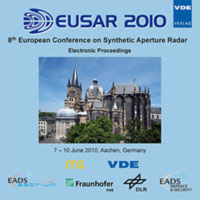Time Series Investigation of Land Subsidence Using a Weighted Least Squares Adjustment Based on Image Mode Interferometric Data
Conference: EUSAR 2010 - 8th European Conference on Synthetic Aperture Radar
06/07/2010 - 06/10/2010 at Aachen, Germany
Proceedings: EUSAR 2010
Pages: 4Language: englishTyp: PDF
Personal VDE Members are entitled to a 10% discount on this title
Authors:
Akbari, V. (Department of Physics and Technology, University of Tromsø, Norway)
Motagh, M. (GeoForschungsZentrum, 14473 Potsdam, Germany)
Motagh, M.; Rajabi, M. A. (Department of Geomatics Engineering, University of Tehran, Iran)
Djamour, Y. (National Cartographic Center of Iran, Iran)
Abstract:
This study presents the weighted least squares method based on Interferometric Synthetic Aperture Radar (InSAR) images to retrieve spatial-temporal evolution of land subsidence in Mashhad Valley, northeast Iran. Using the analysis of a few interferograms covering the 2003-2005 period, Motagh et al (GJI 2006) presented a preliminary analysis of the subsidence in this area. Here we extend this study and use additional SAR data to retrieve time-dependent deformation in Mashhad Valley We utilize 17 SAR images acquired by the ENVISAT satellite in a descending orbit during Jun. 2004 - Nov. 2007, make 53 differential interferograms spanning different long- and short-term intervals, and do a time series analysis to extract deformation signals out of differential interferograms. Time series analysis suggests that the subsidence occurs within a northwest-southeast elongated elliptical shaped bowl along the axis of Mashhad valley. The maximum accumulated subsidence during 1260 days reaches about 86 cm, located northeast of Mashhad City. The comparison between InSAR time series results with continuous GPS station in the city of Tous, northeast of Mashhad, yields comparable results at the level of 1 cm.


